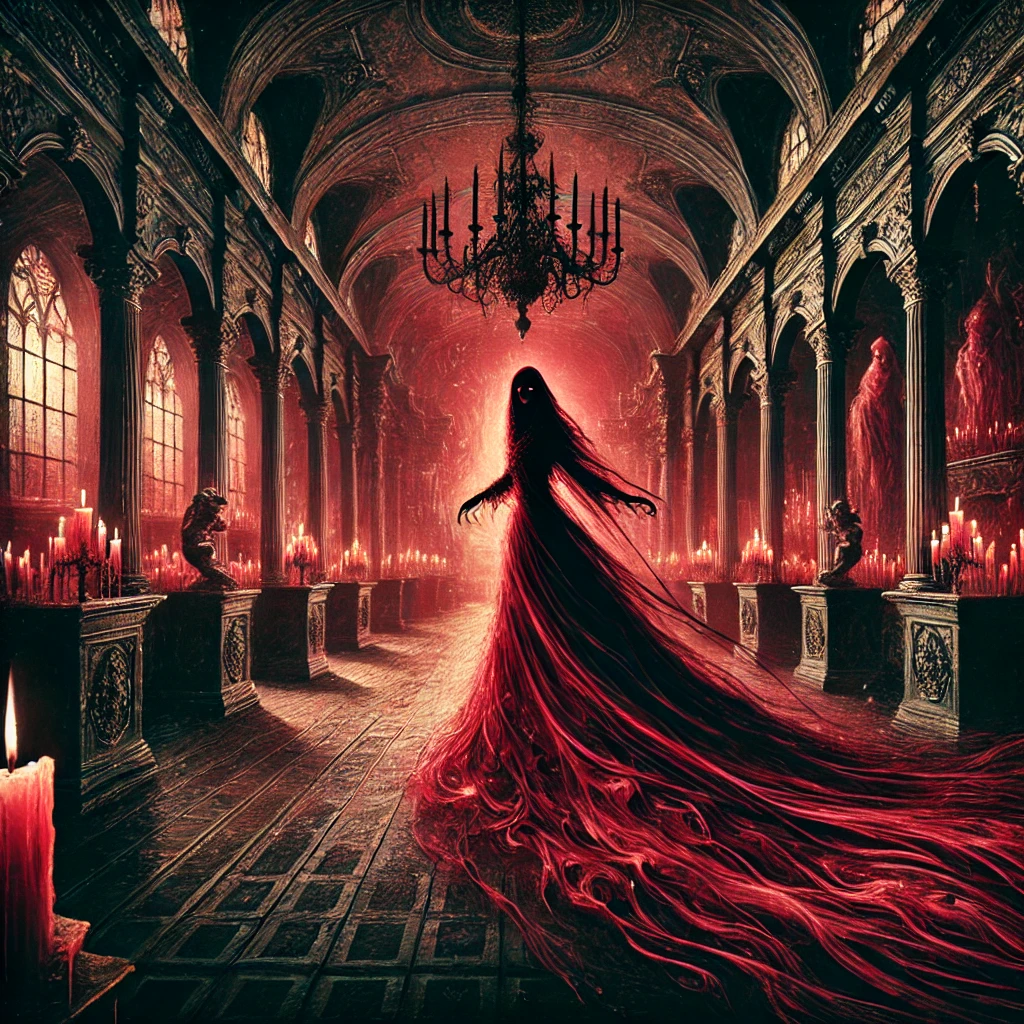To know oneself fully, one must be willing to journey into the depths of the shadow.

The Red Death, the unrelenting force at the heart of Edgar Allan Poe’s The Masque of the Red Death, is more than a symbol of mortality. It embodies the shadow self—the hidden, denied, and often feared aspects of our being. Its presence in the story is a stark reminder that no matter how high the walls we build or how intricate the masks we wear, the shadow cannot be kept out. It moves silently, inexorably, until it stands before us, demanding to be seen.
An Inner Force of Revelation
From my perspective, the Red Death is not merely an external threat but an inner force of revelation. It represents the aspects of self that we try to avoid, suppress, or exile—the parts of us that are marked by shame, guilt, or fear. Yet, as Tobias teaches, “Your Darkness is your divinity.” The shadow is not an enemy but a part of the self that longs to return to wholeness. When allowed and embraced, it transforms from a source of terror into a profound wellspring of wisdom and integration.
The Shadow and Resistance
In Poe’s story, Prince Prospero’s response to the Red Death mirrors humanity’s broader tendency to resist the shadow. By retreating into a fortress of pleasure, distraction, and isolation, Prospero seeks to create a world where the Red Death cannot touch him. Yet his very act of avoidance sets the stage for its inevitable arrival. The fortress, with its iron gates and opulent halls, becomes a prison of denial, and the masquerade—with its vibrant costumes and performances—a desperate attempt to maintain the illusion of safety.
This reflects a universal truth: the more we resist the shadow, the more power it seems to hold. When we deny the parts of ourselves that we find uncomfortable or unworthy, they do not disappear. Instead, they grow stronger in the dark corners of our psyche, waiting for the moment when they can no longer be ignored. The Red Death’s dramatic appearance at the height of the masquerade reveals this truth with unflinching clarity.
The Red Death as a Liberator
Yet the Red Death is not a force of punishment. From the perspective of awakening, it is a liberator. It strips away illusions, dissolves pretenses, and exposes what is real. This is the role of the shadow in the journey of realization. When we allow ourselves to face the parts of us that we fear the most, we discover that they are not as terrifying as we imagined. In fact, they often hold the key to our deepest transformation.
Gnosis and the Shadow
In Gnostic philosophy, the shadow is intimately connected to the process of gnosis—inner knowing. To know oneself fully, one must be willing to journey into the depths of the shadow. The Red Death, in this sense, is an archetypal guide. It forces Prospero and his guests to confront the ultimate truth: that death, like the shadow, is not something to be feared or avoided but embraced as a part of the wholeness of existence.
The Shadow as an Agent of Grace
Through this lens, the Red Death can be seen as an agent of grace. Just as the Dragon in awakening reveals the illusions and blocks that prevent us from realizing our true nature, the Red Death reveals the futility of avoidance and the necessity of integration. It is a call to surrender—to release the resistance that keeps us fragmented and to step into the fullness of who we are.
Reflection: Embracing the Shadow
As we begin this journey through The Masque of the Red Death, let us remember that the shadow is not our adversary. It is our companion on the path to wholeness. The Red Death, with its blood-stained visage and relentless approach, is not here to destroy us but to bring us face-to-face with the truth of our being. In its presence, we are invited to drop our masks, open the gates, and allow the light of awareness to illuminate even our darkest corners.
Stop working on your issues. Just allow the wisdom to come in.
